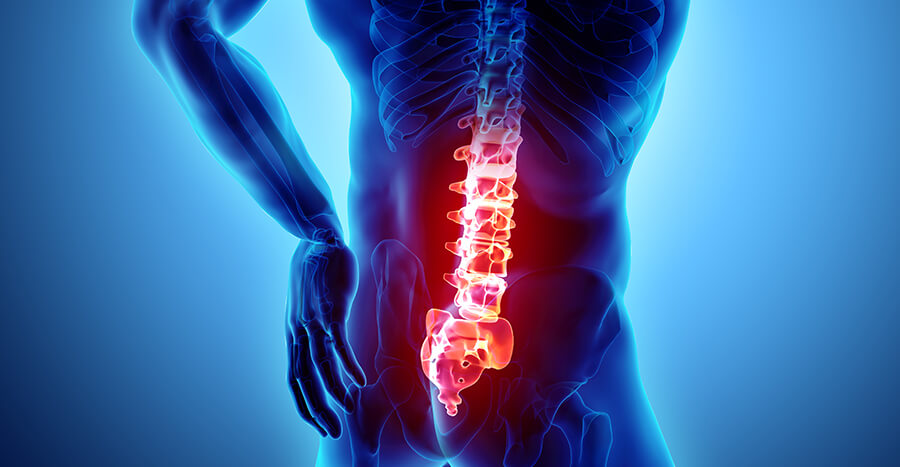By now you’ve read a few of our other entries about back pain. As you can gather, there is a plethora of conditions that can develop, with each being unique in its own (painful) way. The good news is with each condition that develops, there is also a treatment plan to help.
If you are dealing with pain that occurs anytime you move, there are many therapies that can be experimented with before going the surgical route. Physical therapy, alternative treatments and pain management are all good in theory, but after all options have been exhausted, there is also a surgical procedure that can be done, Anterior Lumbar Interbody Fusion (ALIF).
That big long title, in basic terms, involves removing the intervertebral disc. It’s a spine surgery approach through an incision in the front of the body, typically through the abdomen. This surgery removes the herniated disc (or bone) material that is causing the pain between two adjacent lumbar vertebrae. From there, the vertebrae are fused using bone graft (or substitute).
The bone graft acts like a binding agent to help replace the “function” of the disc that was there. As your healing progresses, the bone graft and the vertebrae bone grow together, thereby stabilizing the spine. Certain additions such as rods, screws, plates, cages, hooks and even wire can be used to ensure you are fully supported and secured. The procedure may be performed either as an open surgery or using minimally invasive techniques.
After your surgery you can typically go home the next day. First, you’ll recover in a postoperative recovery area and gradually start to move around with gentle movements. It is recommended that you have someone there to help and monitor you. Plus, you’ll probably want some company.
Be sure to schedule your follow up appointments as they are crucial to the healing process. The first follow up should be 3 days or 72 hours. You’ll be able to return to your daily activities after 6 to 12 weeks but your surgeon will be the one to make the decision to release you for all of these. We should be clear though: you’ll need to limit bending, lifting and twisting for up to 3 months. And, as with any surgery, each patient’s result and recovery is based on their health, lifestyle and keeping up with the treatment plan.
ALIF has been performed on thousands of patients, but one person in particular credits this surgery to helping him re-emerge into his sport, Tiger Woods. Tiger had this surgery performed after three previous surgeries to try and relieve pain in the very bottom of his lumbar spine. Due to a severely narrowed disc, he was experiencing pain in his back and leg that physical therapy and medications couldn’t help. ALIF keeps the preservation of normal lower back muscle which makes it an obvious choice for patients with an active lifestyle. Just two years after Tiger had this procedure done, he had an impressive comeback victory in the 2019 Masters. It’s safe to say that ALIF was a career restoring factor for Tiger Woods.
CNY Spine and Brain gives a brief overview of Anterior Lumbar Interbody Fusion (and many others) on our website at: https://cnybrainandspine.com/treatments. At CNY Brain & Spine we don’t want you to live in pain and will work with you on the best treatment plan for your condition. Central New York Brain and Spine Neurosurgery specializes in performing this procedure. We are focused on finding the best possible solution to the issue or condition you are experiencing.

